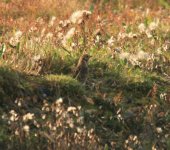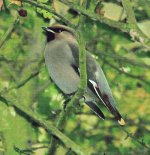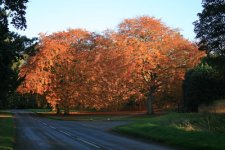Songkhran
Well-known member
Pomskua and Rob's replies are interesting.
On Saturday and Sunday all the birds I saw at Titchwell were heading west. I did not see any birds heading east. The passage was steady all the time I was there 10.00am to 3.00pm. The paucity of birds at Sheringham implies that the Holme/Titchwell birds moved close enough inshore to be observed, somewhere?? in between the two locations.
Yesterday, the very few Titchwell birds were heading west. The number of birds at both locations was reversed but with the same implication behind it i.e.the birds were moving close inshore somewhere?? between the two locations.
Can anybody say which direction the Sheringham birds were moving Saturday,Sunday, Monday?|:S|
On saturday there were fair no's past sheringham - 21 east morning then at salthouse in afternoon 13 west + a few loafing,
Sunday at Salthouse all birds heading east with a build up in the afternoon total about 40.
Monday all heading east - and despite rougher weather slightly further out, although some still pretty close - total about 110.
i think my theory was completely wrong! it seems the poms don't want to be heading east and the winds blows them that way, the stronger the wind the more you get heading east past sheringham however when wind drops and they get their bearings they then head west - is this because they are trying to go north and head out into atlantic via north of scotland. High no's at Holme because they all begin to log jam as they get to the Wash? Still alot of unanswered qus though.
Don't want to clog up norfolk thread with constant theories about poms might start a 'skuaforum' on the seawatching forum.







